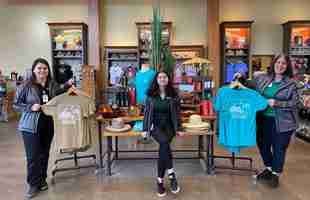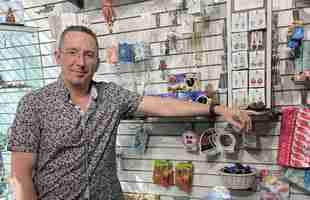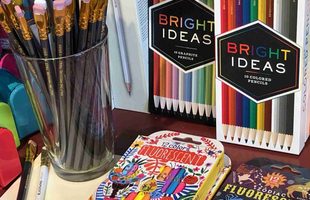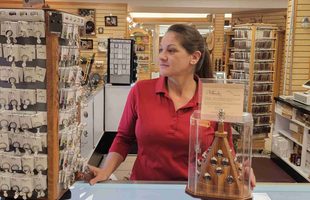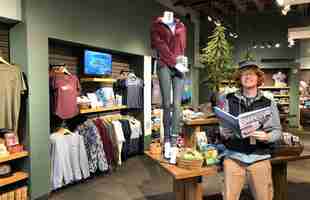When it comes to top selling souvenirs and quality gifts at zoos and aquariums, each gift shop offers its own unique items – and personal take – on finding and selling the best. Nationwide, gift shop staff members give their insights into top sellers and how they find them.
At Reptile Gardens in Rapid City, S.D., Sales Manager Becky Beaton said her top selling souvenir items are “definitely plush. Pretty much any stuffed animal does well for us. We go through quite a few stuffed snakes,” she laughs.
Quality gifts? “We do well with shot glasses, mugs, and on the high end, with rocks, minerals, and geodes. We have some geodes up to $8000. We don’t sell those very often,” she noted. “We have smaller geodes in the $100-$1000 range that sell 10 to 20 times a year on average.”
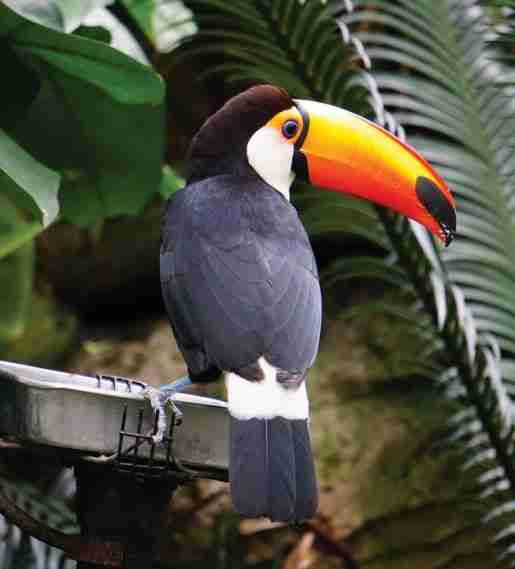
Deciding on a new souvenir to stock depends in part on customer requests, Beaton explained. “We keep a constant list of customer requests. So, if someone comes up and says it would be really great if we had sippy cups for kids, and we hear that a couple of times, we will bring it up with our vendors, and see if they can come up with a cute design that relates to us. Basically, we start our own list, and then work with vendors that we have relationships with to give them ideas of what we are looking for and what we would like them to come up with.”
In Salt Lake City, Utah, at the Utah Hogle Zoo, Gift Shop Supervisor Skyler Holbrook, speaking for Retail Manager Natasha Elander, said key chains, postcards, and plush are the shop’s highest sellers. “We have multiple shops throughout the zoo.We carry plush specifically related to the animals we have at different locations in the zoo,” Holbrook relates. “The best-sellers depend upon the area; for example, at our Rocky Shores shop location where we have polar bears and grizzlies, those animal shapes sell best in plush. In the Asian Islands location, it’s plush tigers and pandas.”
When it comes to top selling quality gifts, it’s all about animal art work. “We have some paintings painted by our animals; we also have some prints from local artists that do very well.” The shop’s most expensive gift items are blown-glass sculptures. “They go from $10 to $80 depending on the size, and they do sell.”
“We keep a constant list of customer requests. So, if someone comes up and says it would be really great if we had sippy cups for kids, and we hear that a couple of times, we will bring it up with our vendors, and see if they can come up with a cute design that relates to us. Basically, we start our own list, and then work with vendors that we have relationships with to give them ideas of what we are looking for and what we would like them to come up with.”
– Becky Beaton, Reptile Gardens, Rapid City, S.D.
Rebecca Taylor, gift shop supervisor at Wildlife Safari in Winston, Ore., described “anything cheetah” as her most popular souvenirs. “We are a cheetah breeding facility as well as a wildlife park, so they are one of our biggest plush sellers, as well as a strong seller in figurines and toys. Giraffes and elephants do well in plush, too.” According to Taylor, “In the summer months, we have a small kiosk store as well as our main store, and everything there is cheetah products.” She said another popular item are small toy “pinchers” in different animal shapes. “Kids can pull a little trigger and they give a little bite.”
Figurines top her list of best-selling quality gift items, along with rocks and minerals, and in the clothing category, jackets and shirts. “The figurines are made from polystone, wood, soapstone, and glass. They all represent our animals: zebras, giraffes, elephants, tigers, bears, and cheetahs.”
Taylor’s most expensive gift item however, is not statuary, but plush. “We have a huge plush from Melissa and Doug, extremely large giraffes, lions, tigers, and cheetahs. They sell very well for us. The average giraffe stands 6-feet tall, and costs $124.”
Taylor asserted that she tries to determine souvenir trends when selecting new items for the shop. “I also read Souvenirs, Gifts & Novelties magazine, and I attend trade shows. I just try to stay fresh.”
Lorie Judd is assistant regional manager of the Big Bear Valley, Calif., Recreational Park District, as well as being the buyer for the Big Bear Alpine Zoo gift shop. Judd said the shop’s top sellers in the souvenir category are T-shirts and magnets with photos of the zoo’s own animals on them. “We are learning that things with the zoo logo on them are top-notch in terms of souvenir sales.” As to gifts, “Stuffed animals that reflect our biggest animals at the zoo, black bears, grizzly bears, and snow leopards, all do well. So do our purses made by Aurora, with our logo on them.” Her biggest selling gift items, however, are name-dropped silicone cups, sippy cups and bowls, from the company Sili Pints. “Once you put your hand on them, you have to have them. They’re just extremely cool. You can freeze them and put lemonade in them, you can heat them. They really sell.” Her most expensive gift? “Figurines shaped like bears. They are our highest-end item right now, and they do pretty well for us.”
Deciding on a new souvenir to stock in her 200-square-foot space includes “looking at this magazine every day and looking at vendors,” she asserted. “I have only been doing this since December, but I know what I want to carry. We want quality things that look like they are worth the money and are of value. We try to do upper end, nice things. I have nothing in the store that is under $3 because we have such limited space, so everything right now needs to be really special.” She added that “We’re not afraid to try new things; as an alpine zoo, it can be harder to find bear and mountain lion items as opposed to lions and elephants.” She noted that “We’ve made a few mistakes: we had garden flags with the zoo name at one point and that didn’t go so well. I’m learning as I go what really does great.” According to Judd, “I run a parks district as well as a gift shop, but we are doing well. In fact, over 20 percent of our daily sales above gate admission comes from our gift shop. We call it the little closet that could,” she joked. The zoo and gift shop are planning a major expansion in the next year.
And in Duluth, Minn., Sarah Langer, gift shop manager at the Great Lakes Aquarium, said her top selling souvenirs are “postcards that feature our local images, and reusable water bottles that are name-dropped. We got rid of individual plastic bottles from our coolers, so these are extremely popular.” In the quality gift area, Langer said locally made soy candles and bookmarks that are created by animals at the aquarium are tops. “The bookmarks are made by our river otters, and our skunks. They are a very unique and popular gift item.” Her most expensive gift sold is a locally-made tote bag that is not name-dropped. “It was here in the shop before I arrived a few years ago, and the price point is $99. They are not a strong seller. In general, I try to keep everything under $50, because that’s really the price point in our area.” Choosing new souvenir items to stock, Langer said she relies on searching other stores in the area to see what is being carried, and she’ll talk to sales reps that reach out to her. “I also do look through Souvenirs, Gifts, & Novelties magazine for ideas.”
Choosing gifts and souvenirs that fit zoo and aquarium shops may require a little searching, but finding the right merchandise results in top-sellers.

